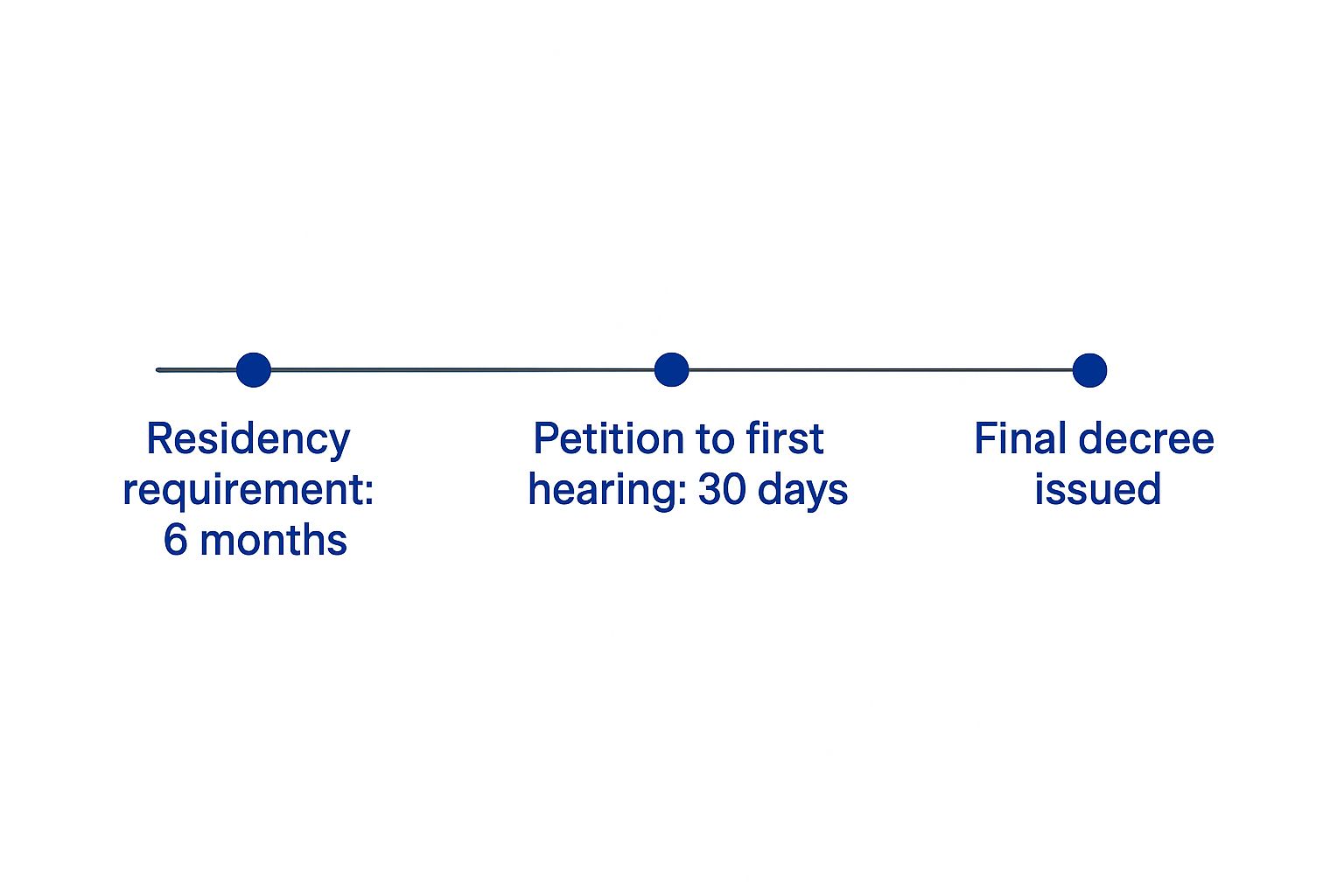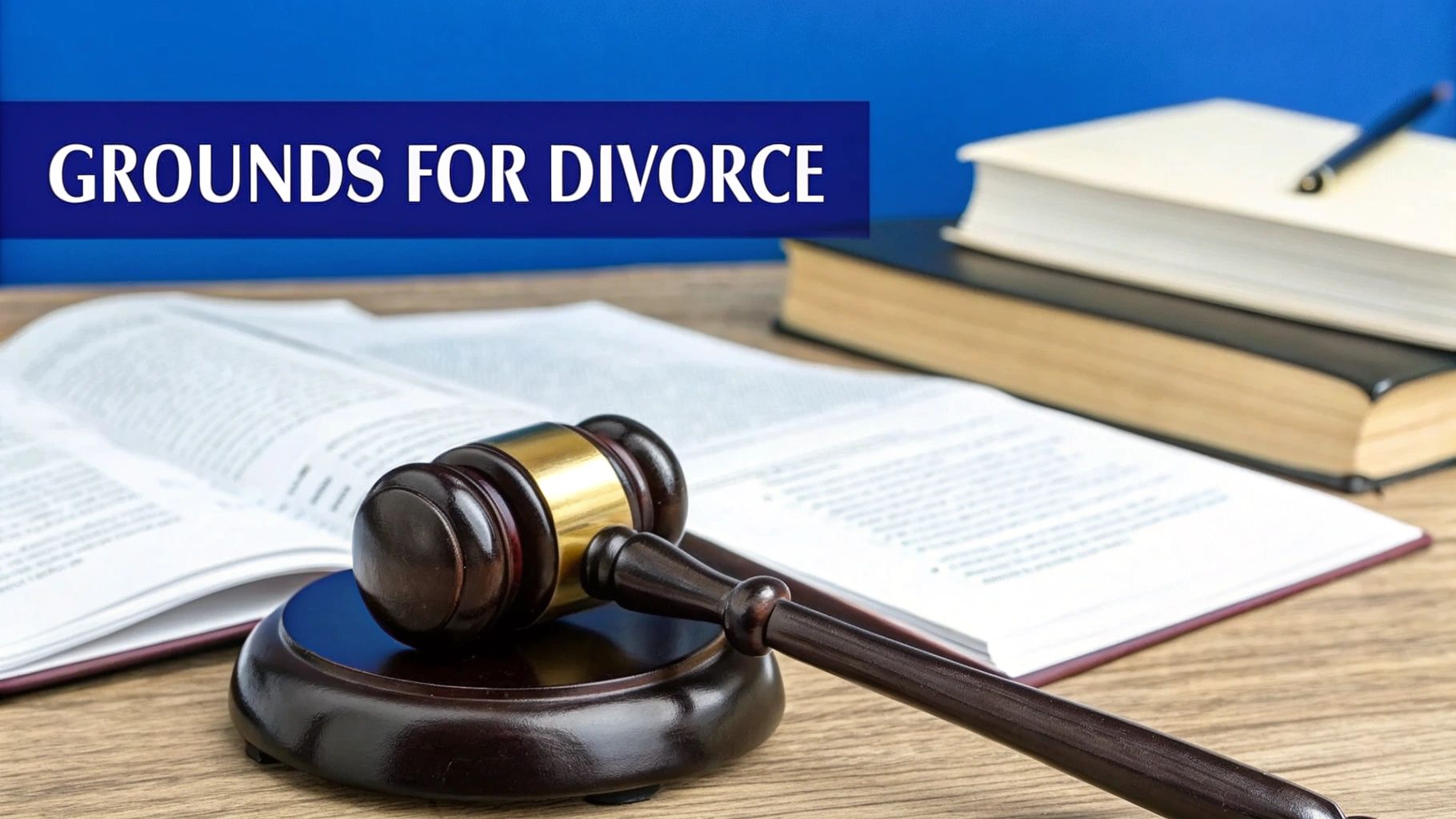Understanding New York Divorce Laws: Grounds, No-Fault, Adultery & More.
We are here to discuss a very juicy legal topic for our beyond dear readers. Divorce laws in NYS have evolved, transformed, progressed (you get the point) a whole lot in recent years and that means you can take advantage of the system to help you attain an easier divorce or a simplified family law case. So don’t fall asleep standing as they say and make sure the law is on your side and not the annoying spouse you are looking to divorce.
From restrictive beginnings to the current no-fault system, these changes reflect evolving societal norms and a growing understanding of marriage’s complexities. To understand current New York divorce laws, it’s helpful to look back at their history.
From Adultery to No-Fault: A Shift in Grounds
Initially, New York divorce law was extremely limited. The first New York divorce law, enacted in 1787, primarily allowed divorces on the grounds of adultery. This made it incredibly difficult for couples to dissolve a marriage if infidelity couldn’t be proven. This restrictiveness continued largely unchanged throughout the 19th century, influenced by Victorian ideals and the stigma surrounding divorce. Societal pressures often kept people in unhappy marriages due to the difficulty and shame associated with obtaining a divorce. Discover more insights about current New York divorce laws.
Expanding the Grounds for Divorce
By 1963, the law was reformed to include other fault-based grounds for divorce. This represented some progress, but it still required couples to assign blame. This often escalated conflict and made the process even more painful. However, it was a significant step toward the more comprehensive laws we have today, eventually paving the way for a fundamental shift in how New York approached divorce.
The Arrival of No-Fault Divorce
A watershed moment arrived on August 15, 2010, when New York finally adopted no-fault divorce. This meant couples no longer needed to prove fault or wrongdoing to end their marriage. One spouse simply had to state that the relationship had broken down irretrievably for at least six months. This change aligned New York with most other states, which had already embraced no-fault divorce decades earlier. The reform simplified the process, reducing the adversarial nature of divorce proceedings and focusing more on practical resolutions.
To better illustrate the current process, let’s look at the key milestones within a typical no-fault divorce in New York. The following table provides a helpful overview:
Key Milestones in New York Divorce Law History
| Year | Legal Change | Significance |
|---|---|---|
| 1787 | First divorce law enacted | Primarily allowed divorce on the grounds of adultery |
| 1963 | Expansion of fault-based grounds | Included cruelty, abandonment, and imprisonment |
| 2010 | No-fault divorce adopted | Allowed divorce based on irretrievable breakdown of the marriage |
This table summarizes the major legislative shifts that have shaped New York divorce law. From its restrictive origins to the current no-fault system, the law has evolved to better reflect the complexities of modern relationships.
The infographic below visualizes the key stages and timelines within a typical no-fault divorce process in New York:
As illustrated, while no-fault divorce has streamlined the process, several stages are involved, from establishing residency to the final decree. Understanding these timelines can help individuals navigate the process more effectively. This evolution demonstrates New York’s ongoing efforts to adapt its divorce laws to the realities of modern relationships and families.
Grounds For Divorce: Choosing Your Legal Path Forward
New York offers two distinct paths to divorce: fault-based and no-fault. Choosing the right path depends on your individual circumstances and the goals you have for your post-divorce life. Making an informed decision requires understanding the differences between these options and how they might impact your case.
Fault-Based Divorce In New York
While no-fault divorce is now common, fault-based divorce remains an option under New York divorce laws. This path requires demonstrating that your spouse engaged in specific misconduct that led to the marriage’s breakdown. This can be a more complex and emotionally challenging route.
- Cruel and Inhuman Treatment: This involves proving a pattern of behavior that endangers your physical or mental well-being. This can include physical abuse, verbal abuse, and emotional neglect. It requires substantial evidence and may involve witness testimony.
- Abandonment: This requires showing your spouse deserted you for at least one year without justification. Simply leaving the home isn’t enough; the abandonment must be intentional and without consent.
- Imprisonment: A spouse’s incarceration for three or more consecutive years is grounds for divorce.
- Adultery: This ground for divorce requires proof of your spouse’s sexual infidelity. Gathering evidence can be challenging and emotionally draining.
No-Fault Divorce In New York: The Irretrievable Breakdown Option
No-fault divorce, introduced in New York in 2010, offers a less contentious approach. This path removes the need to assign blame and instead focuses on the irretrievable breakdown of the marriage.
- Irretrievable Breakdown: One spouse must swear under oath that the relationship has broken down irretrievably for at least six months. No further proof of wrongdoing is required. This simplifies the process and can lead to faster resolutions.
Comparing Fault And No-Fault Divorce: Which Is Right For You?
The following table summarizes the key differences between fault-based and no-fault divorce in New York:
“New York Divorce Grounds Comparison: A comprehensive comparison of fault-based versus no-fault divorce options in New York, including requirements and potential outcomes”
| Ground for Divorce | Legal Requirements | Burden of Proof | Potential Impact on Proceedings |
|---|---|---|---|
| Fault-Based (Cruelty, Abandonment, Imprisonment, Adultery) | Specific actions by the spouse meeting legal definitions | High – requires substantial evidence and potentially witness testimony | Can be complex, lengthy, and emotionally charged; may influence property division or spousal maintenance |
| No-Fault (Irretrievable Breakdown) | One spouse affirms the relationship is irretrievably broken for at least six months | Low – affirmation under oath is sufficient | Simpler, faster, and less contentious; typically has less impact on financial outcomes |
This table clearly outlines the differences in requirements and potential outcomes between fault-based and no-fault divorce. Note the significant difference in the burden of proof and the potential impact on the overall proceedings.
Choosing between fault-based and no-fault divorce is crucial. While no-fault divorce streamlines the process, fault-based options may be relevant in certain situations. For example, proving a pattern of domestic violence could influence custody decisions. These cases require careful consideration and the guidance of an experienced New York divorce attorney. Consulting with a legal professional will help you understand the implications of each option and choose the best path for your circumstances.
Protecting Your Financial Future Through Property Division
Property division is a crucial part of divorce proceedings under New York divorce laws. Understanding how assets are split and having a strategy to protect your financial well-being is essential. This involves knowing what constitutes marital property and how its value is determined.
Understanding Equitable Distribution in New York
New York adheres to the principle of equitable distribution. It’s important to note this does not automatically translate to a 50/50 split. The court seeks a fair division, weighing factors like the length of the marriage, each spouse’s contributions, and their future financial needs.
For example, a longer marriage could lead to a more even split, while a shorter one might emphasize individual contributions. This nuanced approach ensures fairness based on the specifics of each marriage.
Identifying Marital Property
Marital property generally includes assets acquired during the marriage, regardless of whose name appears on the title. This encompasses real estate, bank accounts, investments, and even business interests. However, separate property, like inheritances or gifts to one spouse, is usually excluded.
This means a family heirloom received before the marriage would likely remain separate property. Interestingly, any increase in that heirloom’s value during the marriage could become subject to division.
Common Valuation Disputes
Disagreements often arise regarding the value of certain assets, especially businesses, real estate, or retirement accounts. Accurate assessment is critical. Valuing a privately held business, for instance, can be complex, requiring specialized valuation experts. Similarly, different real estate appraisals can spark disputes.
Negotiation Tactics and Protecting Your Interests
Effective negotiation is key to a fair settlement. Working with an experienced New York divorce attorney can help you understand your rights and negotiate effectively. This includes gathering comprehensive financial documentation and presenting a clear picture of your current and future financial needs.
Proposing solutions addressing both parties’ concerns is also important. Recognizing signs of hidden or undervalued assets, such as unexplained large withdrawals or asset transfers to family members, can help safeguard your interests.
Planning for Your Post-Divorce Financial Stability
A post-divorce financial plan is crucial for long-term stability. This involves budgeting, exploring career options, and seeking guidance from financial professionals. This plan should address immediate needs like housing and living expenses, while also projecting long-term financial goals. By understanding New York divorce laws and planning strategically, you can effectively protect your financial future.
Navigating Child Custody With Your Children’s Best Interest
Child custody arrangements are often the most emotionally challenging aspect of divorce under New York divorce laws. Shifting the focus from the adversarial nature of a custody dispute to the well-being of your children is crucial. New York courts prioritize the best interests of the child, making this the guiding principle in all custody decisions.
Understanding the Best Interests Standard
This standard encompasses a range of factors related to the child’s physical, emotional, and developmental needs. These factors include each parent’s capacity to provide a stable and nurturing environment, the child’s existing relationship with each parent, and each parent’s willingness to encourage a positive relationship between the child and the other parent.
For instance, a parent’s work schedule and ability to provide consistent care are important considerations. The child’s own wishes may also be considered, especially if the child is of a mature age and understanding.
Developing Effective Parenting Plans
A well-defined parenting plan is vital for establishing a clear structure for childcare responsibilities. This plan outlines key details such as physical custody (where the child lives), legal custody (decision-making authority), visitation schedules, and communication protocols between parents regarding the child’s needs.
The plan should also address daily routines, healthcare decisions, and educational choices. A comprehensive plan promotes stability and reduces the potential for future conflicts. This ultimately benefits the child by fostering a more predictable and secure environment.
Documentation and Communication Strategies
Maintaining detailed records of your interactions with your child and your co-parent can be beneficial during custody proceedings. This might involve keeping a journal that documents parenting time, school involvement, and medical appointments.
Open and respectful communication with your co-parent, even when facing difficulties, demonstrates your commitment to your child’s well-being. Effective communication minimizes conflict and promotes a more cooperative co-parenting relationship, which is viewed favorably by the courts.
Addressing Special Needs and Modifications
If your child has special needs, the parenting plan should address those specific requirements. This could involve outlining specialized care arrangements or educational provisions. The plan should ensure that the child’s unique needs are consistently met by both parents.
New York divorce laws allow for modifications to custody arrangements as circumstances change. If a parent relocates or a child’s needs evolve, the current custody order can be reevaluated. This adaptability ensures the arrangement consistently serves the child’s best interests. By prioritizing your child’s well-being and seeking professional legal counsel from an experienced New York divorce attorney like those at Aronov Law NY, you can effectively navigate the complexities of child custody. Focusing on cooperation and open communication can lead to positive outcomes for both you and your children.
Filing for Divorce: Your Step-by-Step Roadmap
Filing for divorce in New York can be a daunting experience. This roadmap, drawn from the experiences of New Yorkers who have navigated the system, offers a clear and manageable breakdown of the process under New York divorce laws. We’ll cover the required forms, filing procedures, and common issues that can lead to delays.
Initiating the Divorce Process: The Summons and Complaint
The first step involves preparing and filing a Summons with Notice or a Summons and Complaint. The Summons with Notice informs your spouse that you’ve initiated divorce proceedings. The Summons and Complaint provides further details about the reasons for the divorce and what you’re asking the court to grant. This crucial first step officially starts the legal process. These documents must be filed with the Supreme Court in the county where either spouse resides.
After filing, the next important step is serving these documents on your spouse. This must be done according to specific legal rules to ensure they receive proper legal notification. It’s important to note that “serving” doesn’t mean you personally hand them the papers. Specific rules govern who can serve the documents and how it should be done.
Responding to the Divorce Filing: The Answer or Counterclaim
Once served, your spouse has a specific timeframe to respond. This is typically done by filing an Answer, which addresses the claims outlined in the Summons and Complaint. Your spouse can also file a Counterclaim, making their own claims against you. This back-and-forth exchange of legal documents sets the stage for the next phase.
The exact timeframe for responding depends on the method of service. Personal delivery usually allows 20 days for a response. Other methods, such as service through a designated agent, might allow 30 days.
Preliminary Hearings and Case Management
After the initial filings, the court may schedule preliminary conferences. These conferences offer an opportunity for both parties and their attorneys to meet with a judge to discuss the issues. The goal is to identify areas of agreement and disagreement, and to create a plan for resolving the case.
The judge may address temporary issues like child support or spousal maintenance, also known as alimony, during these initial proceedings. These arrangements provide stability while the larger, more permanent issues are being resolved.
Contested vs. Uncontested Divorce: Timelines and Costs
The timeframe and cost of a divorce vary considerably depending on whether it is contested or uncontested. Uncontested divorces, where both parties agree on all terms, are generally quicker and less expensive. These cases can often be finalized within a few months.
Contested divorces, involving disputes about property division, child custody, or spousal maintenance, can take much longer and be significantly more expensive. These often involve extensive negotiations, mediation, and possibly a trial. The duration can range from several months to several years, depending on the complexity of the issues and the level of cooperation between the parties.
Navigating New York divorce laws can be complicated. Contact experienced New York divorce attorneys at Aronov Law NY for guidance. They can help you understand your rights and obligations and work towards the best possible outcome.
Securing Financial Stability Through Spousal Maintenance
Spousal maintenance, often called alimony, is a key component in many New York divorces. It provides financial support from one spouse to the other, ensuring fairness and stability both during and after the divorce process. Whether you anticipate paying or receiving support, understanding how maintenance is calculated is essential.
How New York Courts Determine Spousal Maintenance
New York courts use a specific formula and consider a variety of factors to determine maintenance amounts and duration. The formula takes into account the income difference between spouses and the length of the marriage. For instance, shorter marriages may result in shorter maintenance periods. Longer marriages, on the other hand, often lead to more long-term support.
Beyond the formula, courts also consider factors such as each spouse’s age, health, earning capacity, and contributions to the marriage, including any career sacrifices. Strong documentation is crucial for demonstrating the impact of these factors. This includes financial records, employment history, and relevant medical records.
Documenting Financial Needs and Securing Fair Terms
If you are seeking maintenance, thoroughly documenting your financial needs is vital. Provide a detailed account of your living expenses, debts, and income. Clear documentation helps to demonstrate the need for support and ensures a more accurate calculation of appropriate payment amounts.
Negotiating fair payment terms is also essential. Explore various options such as lump-sum payments, periodic payments, or a combination of both. Focusing on solutions that meet the needs of both parties can lead to a more sustainable agreement.
The Impact of Career Sacrifices, Health, and Age
Career sacrifices made during the marriage, such as one spouse leaving the workforce to raise children, are significant factors in maintenance decisions. Such sacrifices often negatively impact a spouse’s earning capacity and long-term financial stability. New York courts carefully consider these sacrifices.
Health concerns and age also play a role in determining both the amount and duration of maintenance. A spouse with significant health challenges that limit their ability to work is more likely to be awarded greater support. Age is another important factor, especially for older spouses facing difficulty re-entering the workforce after a long marriage.
Modifications and Enforcement of Spousal Maintenance
Life circumstances can change unexpectedly. New York divorce laws allow for modifications to existing maintenance orders if there is a substantial change in either spouse’s situation. This might include a job loss, a significant increase in income, or a change in health status. These modifications help ensure the arrangement stays fair and appropriate.
Enforcement of a maintenance order becomes necessary when a paying spouse falls behind on payments. Several legal options exist for enforcement, including wage garnishment and contempt of court proceedings. Understanding these options can empower those entitled to support to receive the payments they are owed. Starting a new business after a divorce can be a fresh start.
Navigating spousal maintenance requires a strategic approach. Consulting with experienced New York divorce attorneys at Aronov Law NY is highly recommended. They can offer expert guidance, explain your rights, and advocate for your best interests. Contact us today to secure your financial future.


Free Legal Consultation
98-14 Queens Blvd




